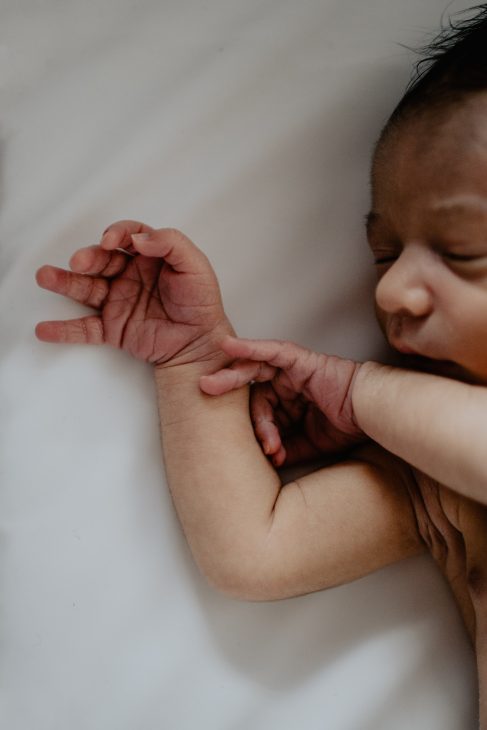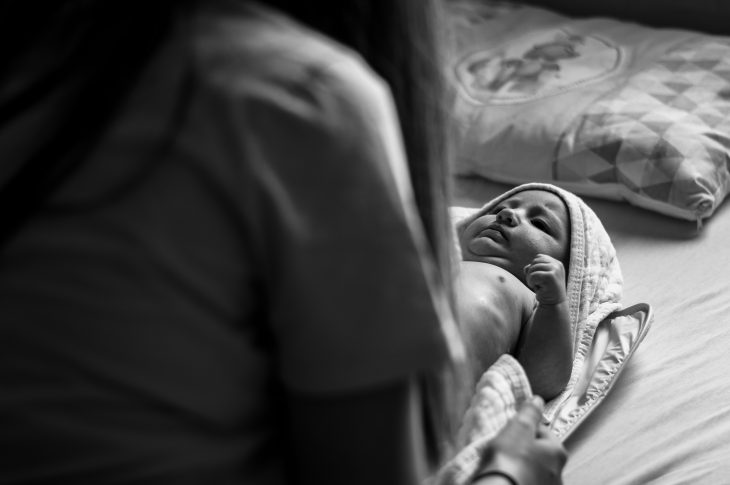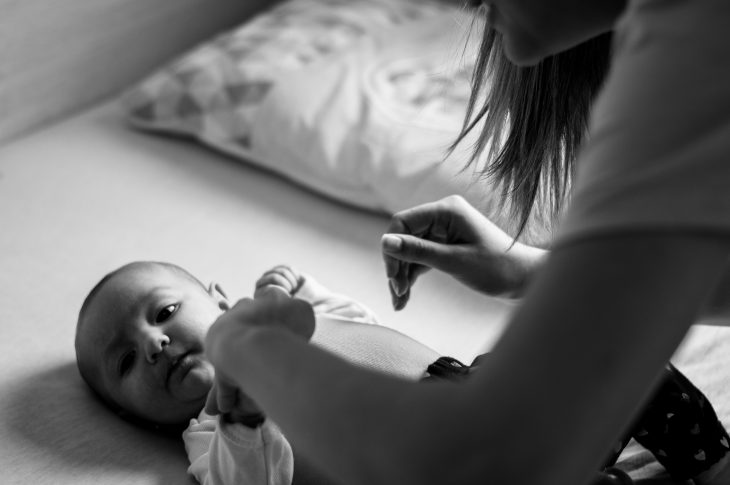When do babies stop flailing arms and legs? That’s a good question! While most babies might stop this sort of behavior early on, others may continue doing it for months on end. So what gives? In this post, we will answer the question of when do babies stop flailing arms and legs as well as reveal why babies tend to do it in the first place.
Baby Flailing Arms and Legs While Bottle Feeding
The answer to why would a baby be flailing arms and legs while bottle feeding may be similar to why a baby is fussy during bottle feeding .
Like these other scenarios, there could be a variety of reasons this could be happening including excitement, too fast of a letdown during breastfeeding, a fast bottle-feeding nipple flow, an allergy to milk, and a variety of other causes.
When Does Baby Stop Flailing Arms in Sleep?
When Do Babies Stop Flailing Arms in Sleep?
Babies that are flailing their arms in their sleep usually stop doing this around two months of age. That’s because it is at this time that babies lose their Moro reflex, which causes your baby to “startle” even in his or her sleep.
Unfortunately, this same reflex causes babies to wake up from a sound slumber. So we’re certain that you’ll be glad to say farewell to this natural and common reflex when your baby is around 8-9 weeks of age.

What Age Do Babies Stop Involuntary Movements?
There are many involuntary movements that babies experience during infancy. Many of these reflexes go away somewhere between 2-6 months of age. Depending on the reflex, some may go sooner than others.
The following are just a few involuntary movements your baby may experience:
- Moro Reflex
- Rooting Reflex
- Shaky or Jerky Movements
- Grasp Reflex
Baby Constantly Kicking Legs and Moving Arms
A baby constantly kicking legs and moving arms can mean a lot of things.
Some babies do this as a way to naturally strengthen their arms and legs, while others may be doing it to show excitement, anger, or sadness.
Related Read: Best Activity Mat for Infants Development
To know for sure, look for other clues as to what might be going on. Is your baby crying? Smiling? Are they overstimulated or stressed? All of these are clues as to why your baby may be moving his or her arms and legs so much.
Know that in most cases, a baby moving his or her arms and legs a lot isn’t a cause for concern. Still, if the movements are paired with crying, screaming, clenched fists, or drawing up of the legs, then your baby’s movements could signal something much deeper.
As always, consult your pediatrician if your baby’s behavior seems abnormal or is particularly concerning to you.
Baby Kicking Legs and Flailing Arms 6 Months
At 6 months old, leg kicking may be a very good thing!
Though we still caution you to look for other signs of frustration in your baby (crying, clenched fists, drawing up of the legs) you should also know that a baby moving his or her legs a lot at 6 months is a common occurrence.
This is because your baby is most likely strengthening his or her leg and core muscles in preparation for flipping over. If your baby has already started flipping over, you’ll likely notice them doing a variety of movements with their arms and legs, even on their stomachs or backs. This is normal, and again, is an attempt of your baby to strengthen his or her arm and leg muscles. Think of it as an infant exercise!
And you should help them exercise with some development activities that are fit for their age.

2 Month-Old Constantly Moving Arms and Legs
At two months old, your baby could be flailing his or her arms and legs about in a jerky and uncoordinated manner because of rapid brain development. This is nothing to worry about and is common in all babies.
Still, if you notice that your baby is often crying whilst flailing, it might be a good idea to try swaddling your little one, especially if your baby is under 2 months old, as this often provides more security and comfort.
Note: Always stop swaddling your baby once he or she is able to break out of his or her swaddle, or once your baby begins to flip over on his or her stomach (whichever comes first).
3 Month Old Flailing Arms and Legs While Sleeping
For the most part, flailing or “thrashing” in sleep during infancy is relatively common.
Sometimes your baby may be repositioning themselves or trying to get themselves comfortable. Other times, however, it could be a sign of something deeper, such as eczema or a bad dream.
Whatever the case, be sure to keep an eye on your kiddo and be sure that their sleep environment is a safe one. If you notice your baby clawing or rubbing his or her skin while sleeping, you may wish to speak to a pediatrician about the potential for dry skin, allergies, or eczema woes that may be causing your little one discomfort whilst sleeping.
Baby Kicking Legs and Flailing Arms No Crying
A baby’s arms flailing with legs kicking and without crying is likely just excited or building muscle strength. Sometimes, this is also a sign of overstimulation.
If you’ve got the music blaring, lots of people around, or anything else that might be exciting for your baby it could be the cause of the flailing arms without crying.
Baby Flailing Arms and Legs Before Sleep
Baby Constantly Moving Arms and Legs While Sleeping
A baby flailing arms and legs before sleep may just be trying to find a more comfortable position to lay in. Most times, this type of flailing is no need for concern.

Baby Flailing Arms and Legs? Usually Normal!
Typically a baby flailing his or her arms and legs is nothing to worry about. Still, if the flailing is paired with crying, clenched fists, drawn-up legs, or a general sense of discomfort, you may want to reach out to a pediatrician for further advice. We hope this helps!
Leave a Reply